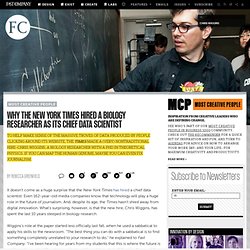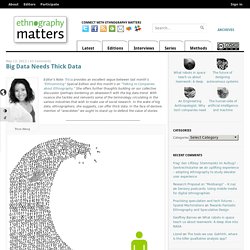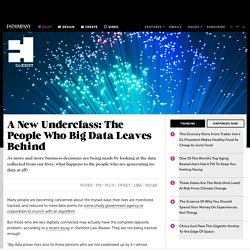

Intelligent Utility. Can Twitter Predict Major Events Such As Mass Protests? The idea that social media sites such as Twitter can predict the future has a controversial history.

Delve Deep. New Software for Data Mining. This article has been amended.

Details below. The Associated Press news agency has developed an open-source tool to help journalists with data mining journalism to assist in original and investigative reporting. Overview, a Web application, aims to make accessible, for journalists and scholars, a way of analyzing massive amounts of disorganized collections of digital documents. The prototype was completed in 2011 and rewritten as an easy-to-use web application by the summer of 2013. The project was developed by Jonathan Stray, a computer scientist and journalist who was Interactive Technology editor for the Associated Press and now teaches computational journalism at Columbia University. Twitter is finally figuring out how to turn data into dollars. Twitter’s first earnings call didn’t go as well as it could have: stock prices fell nearly as hard as Woody Allen’s reputation after investors got worried the blue bird wasn’t growing quickly enough.

Twitter’s revenue results weren’t bad, really, but because monthly active user growth has slowed, there’s legitimate concern that Twitter is losing some momentum. Especially compared to Facebook, which just released its earnings report and showed everyone that it means business. And next to Facebook’s major mobile bragging rights, Twitter’s quarterly results looked even more uninspiring. But the earnings report is not the most interesting announcement Twitter has made in the past few weeks. Why The New York Times Hired A Biology Researcher As Its Chief Data Scientist. It doesn't come as a huge surprise that the New York Times has hired a chief data scientist.

Even 162-year-old media companies know that technology will play a huge role in the future of journalism. And, despite its age, the Times hasn't shied away from digital innovation. What's surprising, however, is that the new hire, Chris Wiggins, has spent the last 10 years steeped in biology research. Wiggins's role at the paper started less officially last fall, when he used a sabbatical to apply his skills to the newsroom. "The best thing you can do with a sabbatical is to find something completely unrelated to your research to do," he explained to Fast Company. As of last week, the Times made him a permanent fixture. Fast Company spoke with Wiggins about what that role will entail and how having a background in biology makes him at all qualified to lead the Times into the future. The Evolution of Big Data. Jump to navigation Infographics & Animations Topics Big Data Education Tags big data, Analytics, White House, Big Data Forum, IT education Click to Enlarge Post a Comment 0 Comments The Evolution of Big Data Download Now Related Content.

G buys Nest. YouTube. 2013 State of the Cloud Report. An organization’s decision to move IT to the cloud is daunting because it is a wholesale change in sourcing and delivery of solutions.

However, most organizations are planning to shift select capabilities there, and many already have. The decision is often influenced by technology trends, including the growth of bring your own device (BYOD), the consumerization of IT and ever-closer ties between technology delivery and business outcomes. CDW’s 2013 State of the Cloud Report surveyed IT professionals to explore what factors drive the shift to the cloud, what types of applications organizations are taking to the cloud and what benefits (beyond cost savings) they are achieving.
Big Data Needs Thick Data. Tricia Wang Editor’s Note: Tricia provides an excellent segue between last month’s “Ethnomining” Special Edition and this month’s on “Talking to Companies about Ethnography.”

She offers further thoughts building on our collective discussion (perhaps bordering on obsession?) N.S.A. Gathers Data on Social Connections of U.S. Citizens. Carolyn Kaster/Associated Press Gen.

Keith Alexander, the director of the National Security Agency, testified on Thursday before the Senate Intelligence Committee. The spy agency began allowing the analysis of phone call and e-mail logs in November 2010 to examine Americans’ networks of associations for foreign intelligence purposes after N.S.A. officials lifted restrictions on the practice, according to documents provided by Edward J. A New Underclass: The People Who Big Data Leaves Behind. Many people are becoming concerned about the myriad ways their lives are monitored, tracked, and reduced to mere data points for some shady government agency or corporation to crunch with an algorithm.

But those who are less digitally connected may actually have the complete opposite problem, according to a recent essay in Stanford Law Review: They are not being tracked enough. "Big data poses risks also to those persons who are not swallowed up by it—whose information is not regularly harvested, farmed, or mined," writes Jonas Lerman, a legal adviser at the U.S. Department of State. Once upon a time, people’s growing trails of digital data exhaust were used mostly used to serve them more personalized advertisements and coupons. Who cares if that didn’t apply to you? These days, however, "big data" analysis is starting to influence decision of higher import that will determine how we live and the opportunities we receive. As an example, Lerman considers two hypothetical individuals: